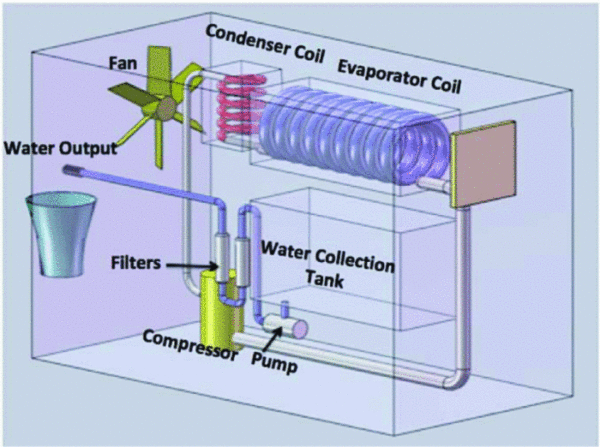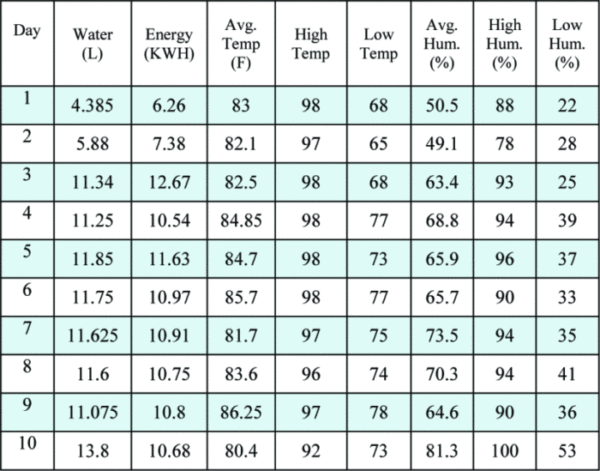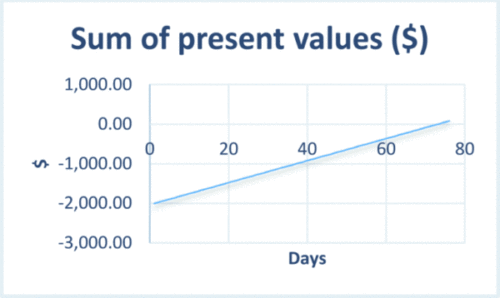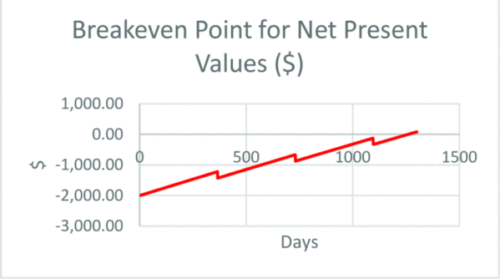One of the great challenges of our time is the limited access to fresh water globally. Due to climate change and growing pollution, natural fresh water is not always available, leading to water shortages and the need for people in some communities to travel long distances for clean water simply to survive.
To help address this crisis, a team from Texas State University analyzed atmospheric water generation (AWG) as a possible solution. While it’s not a new method, its low cost brought it to the team’s attention.
“Past research focused on methods of atmospheric water generation, but little has been done to show its financial viability,” said Dr. Bahram Asiabanpour of the research team. “This study demonstrated that it is a cost-effective way to produce portable water.”
To analyze AWG and its production costs, the team utilized a commercial system (which can be seen below in Figure 1) for a 10-day trial. AWG systems extract moisture from the air, filter it, and collect it for use. The system used in this particular study included a fan, a condenser coil, a pump, and multiple states of filters. It also offered both hot and cold water options. In the study, the system ran nonstop outdoors in a shaded, non-enclosed area during summer.

Figure 1: Commercial AWG System Diagram
The AWG’s production costs were compared to the costs of two other water sources – standard 12 oz bottles available in vending machines and water available for purchase in one-gallon containers at grocery stores. The net present value of costs (initial, consumables, and energy) were also taken into account for financial assessments.
In Figure 2, the amount of water collected from the AWG system’s 10-day trial can be seen, as well as the amount of power it used in different temperatures and humidity levels. Though the system generated about 20% less water than originally predicted, the team was still able to find evidence of its cost effectiveness.

Figure 2: 10-Day AWG System Trial Results
Based on these results, the team could compare the AWG system’s costs with both bottled water and gallons of water. Water generation, labor, transportation, and cooling costs were all accounted for. It was determined that the AWG system’s breakeven point was only 72 days compared to bottled water, while the breakeven point compared to gallons of water was roughly 3.5 years. Financial analysis for both situations can be seen in Figure 3.


Figure 3: Financial Analysis of Bottled Water and Gallons of Water
To ensure a full financial analysis could be completed, the team also examined the impact of interest rates. While interest rates did not affect the breakeven point of bottled water, higher rates did push the breakeven point for gallons of water out even further.
While the amount of water produced over the 10-day period was lower than anticipated, the team was able to prove that AWG systems running 24 hours a day are more cost-effective than bottled water after only a few months. They do acknowledge that much more research needs to be done to better understand AWG performance in different temperatures and seasons. However, they do believe this is a great start to finding and implementing ways to produce clean, affordable water.
“AWG has the potential to become a new source of fresh water for locations with the right conditions,” said Dr. Asiabanpour. “Data is available for engineering, science, and finance researchers to identify the right locations and conditions to create an optimal system.”
For more information about technologies that are addressing water scarcity, visit the IEEE Xplore Digital Library.





